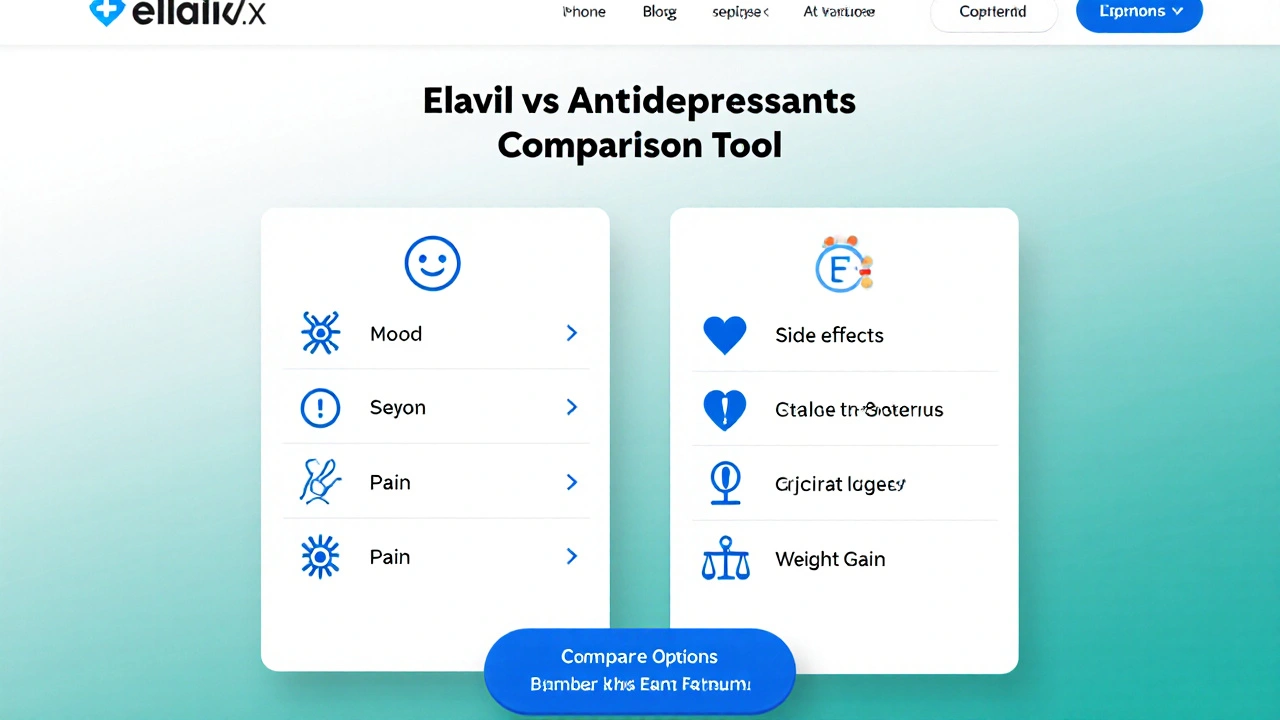When working with TCAs vs SSRIs, a side‑by‑side look at two major antidepressant families—Tricyclic Antidepressants and Selective Serotonin Reuptake Inhibitors—gives a clear picture of how they act, what risks they carry, and when each is preferred. Also known as antidepressant class comparison, it helps clinicians and patients match the right drug to the right symptom profile. This comparison encompasses mechanism of action, safety considerations, and typical prescribing scenarios, so you can see why one class might beat the other in a given case.
First, look at the Tricyclic Antidepressants, older agents that block the reuptake of both norepinephrine and serotonin while also hitting several other receptors. Because they affect multiple pathways, TCAs often produce strong sedative or anticholinergic effects, which can be useful for insomnia but problematic for patients with heart issues. Selective Serotonin Reuptake Inhibitors, newer drugs that primarily increase serotonin levels by inhibiting its reuptake. SSRIs generally have a cleaner side‑effect profile, making them first‑line for many clinicians. If you're deciding between TCAs vs SSRIs, the choice often hinges on the side‑effect trade‑off and the specific depression symptoms you need to target.
Second, consider the side‑effect landscape. TCAs can cause dry mouth, constipation, blurred vision, and cardiac conduction delays—issues that depression treatment, requires careful monitoring of cardiovascular health and dosage adjustments. SSRIs, on the other hand, are notorious for sexual dysfunction, weight changes, and occasional activation anxiety, but they rarely affect heart rhythm. This contrast influences prescribing decisions and aligns with clinical guidelines that prioritize safety in long‑term therapy.
Third, think about dosing and onset of action. TCAs often start at low doses and need gradual titration over weeks, while SSRIs usually begin at a fixed dose with a smoother titration curve. The slower onset of TCAs can be a downside for patients needing rapid relief, yet their potency can be an advantage in treatment‑resistant cases. In practice, SSRIs influence serotonin levels more selectively, leading to fewer drug‑drug interactions, which matters for patients on multiple medications.
Finally, look at the broader evidence base. Large‑scale trials and meta‑analyses have repeatedly shown that SSRIs match or exceed TCAs in overall efficacy for moderate depression, with a better tolerability profile. However, for severe or melancholic depression, some guidelines still recommend TCAs as a valuable second‑line option. This dual‑track approach reflects how clinical guidelines shape antidepressant selection and underscores the need for individualized care.
All these angles—mechanism, side‑effects, dosing, and evidence—create a roadmap for choosing the right drug. Below you’ll find a curated set of articles that dive deeper into each of these aspects, from detailed pharmacology breakdowns to real‑world cost comparisons and safety tips. Use them to sharpen your understanding and make an informed choice for your mental health journey.

Explore how Elavil (Amitriptyline) measures up against popular antidepressant alternatives, with side‑effect comparisons, costs, and a practical switch guide.
